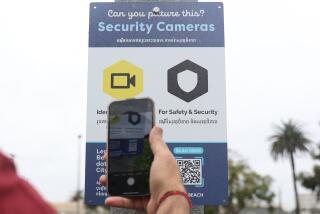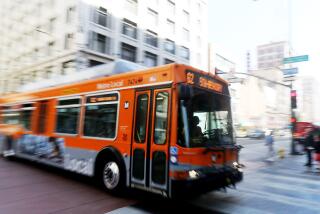Bradley Drops Objection Over $6-Million Cost : Computer Fingerprint System OKd
After resolving a dispute with some city officials over costs, Mayor Tom Bradley on Monday dropped his opposition to a city fingerprinting identification system and agreed to the purchase of a $6-million identification computer.
The city system, which would be similar to a state computer model that helped identify Richard Ramirez as the suspect in the “Night Stalker” attacks, would replace the laborious manual fingerprint identification process.
The mayor’s decision to approve the Los Angeles City Council’s earlier decision to buy the system means a new fingerprinting identification program will probably be in operation by early next year, said Los Angeles Police Chief Daryl F. Gates.
Bradley, in a letter three weeks ago, asked the council to delay going forward with its October decision to purchase a separate computer system for the Police Department. Instead, Bradley asked the council to consider tying the city into a countywide system, which is eligible for state funding. But most council members, arguing the Police Department position that the county system would be too small to meet the city’s needs, rejected Bradley’s proposal. Some criticized Bradley for trying to delay action on the system that is hailed as a way to quickly identify criminal suspects.
At a City Hall press conference Monday with Gates and two council members, Bradley agreed that the city needs its own system. He said he did not delay the city’s ability to get the computer, but wanted to make sure the city “was . . . getting the most cost-effective system.”
With the new city system, the Police Department could clear 25,000 additional cases annually, spokesmen estimate. As it is now, investigators lifting prints from a crime scene must manually determine which finger and which hand the print belongs to before they can identify the suspect. To do this for the millions of prints filed in the system would take 64 years, Gates said. With the new system, an identification can be made in 27 minutes, he said.
The cost of the system may be paid for by federal and state surplus money set aside for police work on narcotics-related crime, or from the city’s general fund, said Councilman Zev Yaroslavsky, chairman of the council’s Finance and Revenue Committee.
More to Read
Sign up for Essential California
The most important California stories and recommendations in your inbox every morning.
You may occasionally receive promotional content from the Los Angeles Times.










